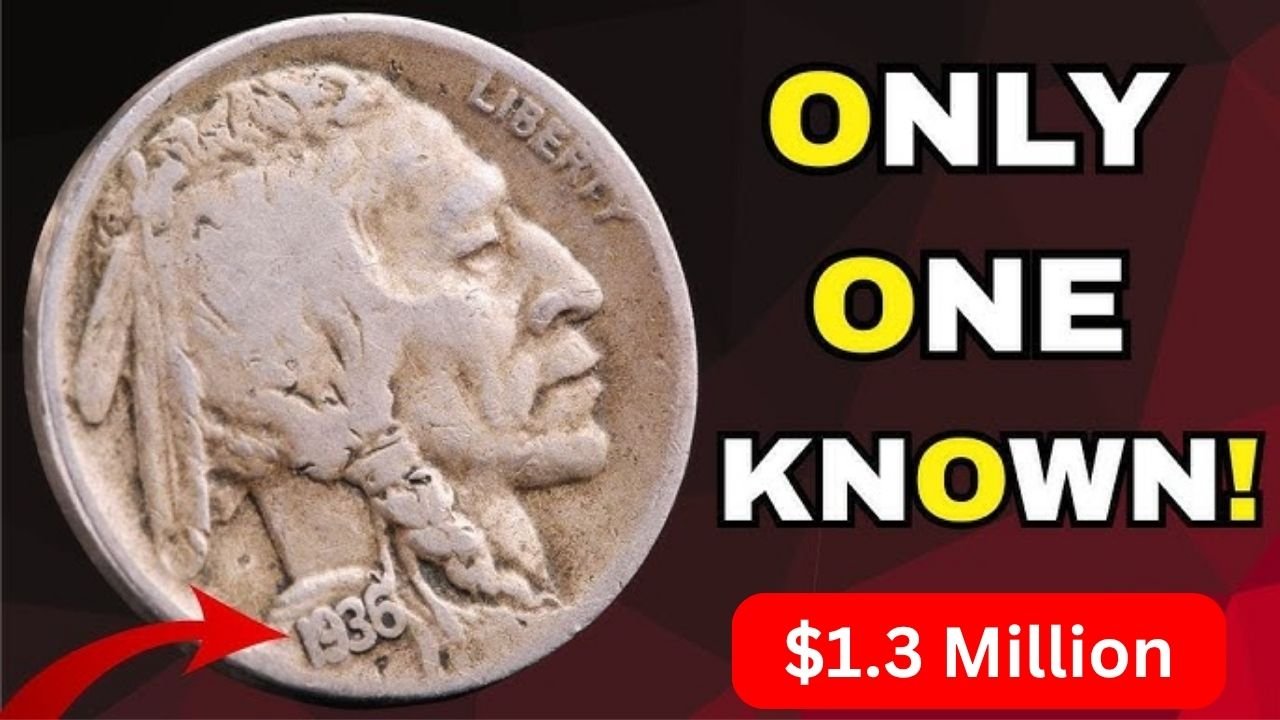A Coin Worth More Than Gold
Imagine pulling a coin from your pocket that’s worth over a million dollars. That’s the dream for collectors chasing rare Buffalo Nickels, some of which are fetching up to $1.3 million at auctions. These coins, officially called Indian Head Nickels, are still hiding in circulation, waiting to be found in loose change or old collections. Their sky-high value comes from unique errors and pristine condition, turning an everyday nickel into a collector’s holy grail.
The Buffalo Nickel was minted in the U.S. from 1913 to 1938, featuring a Native American on one side and a buffalo on the other. Certain versions, especially those with minting mistakes or from specific years, are incredibly rare. For example, a 1918/7-D overdate error—where the mint accidentally stamped a “7” over an “8”—is one of the most valuable. If it’s in top condition, this coin can sell for $1.3 million or more, making it a treasure worth hunting for.
What Makes These Coins So Special?
The value of these Buffalo Nickels comes from a mix of rarity, history, and condition. During their production, the U.S. Mint made occasional errors, like the 1918/7-D overdate or coins struck without a mint mark in years they shouldn’t have been. These mistakes are rare, and collectors pay huge sums for them. The coin’s condition is critical too—those that look almost new, graded as “Mint State,” are worth far more than worn ones.
Here’s a quick look at some high-value Buffalo Nickels and their estimated prices:
| Coin Type | Estimated Value |
|---|---|
| 1918/7-D Overdate | $500,000 – $1.3M+ |
| 1937-D 3-Legged Buffalo | $300,000 – $700,000 |
| 1916 Doubled Die | $200,000 – $500,000 |
| 1926-S in Mint State | $100,000 – $400,000 |
How to Spot a Million-Dollar Nickel
Finding one of these coins takes a sharp eye. Start by checking the year on the front, where the Native American profile is. Look for key dates like 1918/7-D, where the “8” and “7” overlap slightly. On the back, check the buffalo and the small letter below it, which shows the mint—D for Denver, S for San Francisco, or no letter for Philadelphia. For instance, the 1937-D “3-Legged” Buffalo Nickel, caused by a minting error that erased one leg, is another valuable find.
If you think you’ve got a rare one, handle it carefully to avoid scratches. Use a magnifying glass to check for errors like doubled dates or missing mint marks. Then, get it checked by a professional grading service, like the Numismatic Guaranty Corporation (NGC). Fakes are common, so an expert’s opinion is crucial before you start dreaming of millions.
A Collector’s Obsession
For coin enthusiasts, Buffalo Nickels are more than just money—they’re pieces of history. Minted during a time when America was changing fast, these coins capture the spirit of the early 20th century. Collectors love the thrill of the hunt, whether it’s sifting through rolls of coins from a bank or digging through old jars at home. One lucky collector found a 1918/7-D nickel in a family heirloom box, selling it for over $800,000 at auction.
The stories behind these coins add to their charm. The 1937-D 3-Legged Buffalo, for example, happened because a mint worker polished away part of the design by mistake. These quirks make each coin a unique snapshot of a moment in time. Collectors share their finds at coin shows or online, sparking excitement and inspiring others to check their own change.
Could You Find One?
While the chances of finding a $1.3 million Buffalo Nickel in your pocket are slim, it’s not impossible. These coins are still out there, tucked away in piggy banks, cash registers, or old collections. Start by checking any nickels from 1913 to 1938, especially those with clear details. Look for oddities like doubled dates or missing legs on the buffalo. Even less valuable Buffalo Nickels can fetch thousands if they’re in good shape.
If you find a promising coin, don’t clean it—cleaning can ruin its value. Store it in a soft cloth or plastic holder and take it to a reputable coin dealer or grading service. A single nickel could change your life, turning spare change into a fortune. So next time you’re counting coins, take a closer look—you might just stumble across a million-dollar treasure hiding in plain sight.
